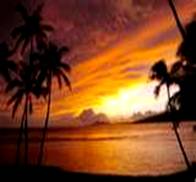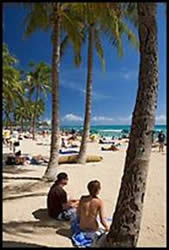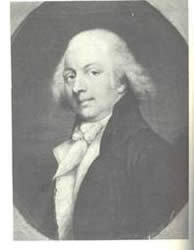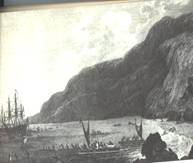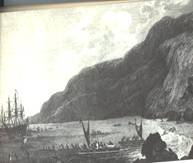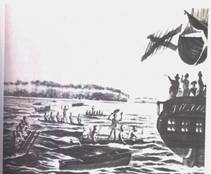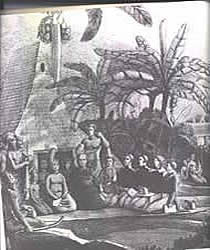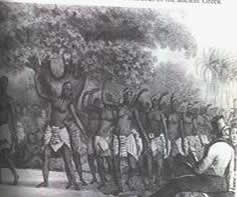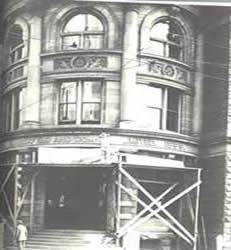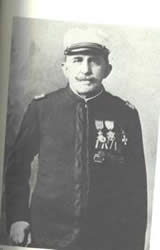GermanAmericanPioneers.org
Preserving the history of German Pioneers in Silicon Valley, USA.
| HOME | ARTICLES | LINKS/RESOURCES | CONTACT US |
I
|
Germany's Fascination with Hawaii |
Germans in Hawaii Niklaus R. Schweizer, wrote the book”Hawaii and the German Speaking Peoples” published in 1982, printed in English as well as German. ----------------------------------------------------------- The German presence in the Hawaiian Islands is a long and venerable one. Aboard Captain Cook's ships there were already three Germans and a Swiss when 0'ahu and later Kaua'i appeared on the horizon on January 17, 1778, and the first Europeans to land officially in the most isolated archipelago in the world stepped ashore at Waimea, Kaua'i, two days later. The Germans were sailors; the Swiss was no other than the famous painter and draftsman John Webber, spelled Johann Waeber in his native Beme, who with his excellent illustrations and paintings introduced Hawai'i pictorially to Europe and America. In the late eighteenth and early nineteenth centuries the intellectuals in Germany looked at the far-flung Pacific islands with great curiosity and profound interest There, under a tropical sun, they hoped to find a kind of earthly paradise, a latter-day Garden of Eden blessed with abundance, a benign climate and friendly inhabitants. The poets Goethe, Schiller and Chamisso, the philosopher Immanuel Kant, and other luminaries all discussed the Pacific intensively and wrote about this wondrous world. Cham'@, who had visited Hawai'i aboard the Russian brig Rurik towards the end of the reign of Kamehameha the Great described vividly the meaning of aloha, or "arocha" as he heard it found moving words for the "huffahurra" and wrote the first grammar of the Hawaiian language, in German of course, published in Leipzig in 1837. Thus sprang up a kind of South Sea romanticism which in many forms has persisted in German-speaking Europe to this day. "Hawal'i" in particular has proved to be a magic word, manifested in the ever increasing numbers of German, Austrian and Swiss tourists flocking to the islands. The Germans did not arrive only as explorers; they also came to settle in Hawai'i. In the 1850's there were a number of flourishing German firms in the area bordered by Merchant and Bethel Streets in the of Honolulu. The leading enterprise was H. Hackfeld & Co., named after its founder Heinrich Hackfeld, originally a sea captain on the Hamburg to Canton run, who parlayed his original wares valued at $8,394.50 in 1849 into the largest firm in all Hawai'i. Under the name of Amfac, Inc., Hackfeld's creation is still the biggest of the "Big Five". Its subsidiary, Liberty House, was once called "B. F. Ehlers", after Hackfeld's nephew. In government the Germans played a role as well. Hermann Widemann was minister of the interior under King Kaltikaua and minister of finances under Queen Lfli'uokalani; Paul Neumann held the position of atterney general; Henry Bertelmann was a major attached to the personal staff of the queen; and other Germans held equally exalted positions. Germans also represented a number of European nations diplomatically, in the capacity of consuls. The German influence in nineteenth century Hawai'i was so strong that Kalakaua often appeared in the uniform of a German cavalry general, and his palace guards wore essentially Prussian tunics tailored by Paul Lemke, who had arrived in Hawai'i from Soldin near Berlin in 1877. The national anthem, "Hawai'i Ponoi", now the state song, was derived from the Prussian anthem "Hefl Dir im Siegerkranz", rearranged by Heinrich Berger of Potsdam, bandleader of the famous Royal Hawaiian Band. The bands were composed by King Kalakaua. The Germans were also noteworthy because they were the only sugar planters to bring in laborers from their own nation. Particularly on Kaua'i some 1400 Germans eventually toiled in the fields, the first contingent having arrived on the ship Ceder on June 18, 1881. In Lihu'e there was an excellent school for their children where both German and English were used in class. The Germans also organized their own church, of the Lutheran denomination, in Lihu'e and in Honolulu. World War I proved catastrophic for the Germans in Hawai'i who with the entry of the United States into the war, had become enemy aliens overnight Many left for the mainland, others stayed but often anglicized their names. Today, however, their valuable contributions are again remembered and their descendants and other Germans, Austrians and Swiss who arrived in recent years play once more an important role in the Land of Aloha. Reprinted from Paradise NewsGermans in HawaiiJohann Waeber, Swiss, Painter for Captain Cook Heinrich Zimmermann, sailed with Captain Cook Rudolph Wilhelm Meyer, Sugar mill Meyer's Historic Sugar Mill,National Register Georg Scheffer, worked for Russian American Co. Barber's Point, named for a German Shipwreck Otto von Kotzebue travels Adalbert von Chamisso, Naturalist Hackfeld started business in 1849 Hackfeld employees, no German on the Job Liberty House, 150th anniversary Klaus Spreckels in San Francisco Henry Berger brought Hawaiian Music to the world Dr. Hillebrand, last but not least, His impact can still be felt Hillebrand and trees of Hawaii Hillebrand and Foster Botanical Garden Dr.William Hillebrand, His Life and Letters German Lutheran Church on Kauai German Nun worked with Leper victims on Molokai Die Blume von Hawaii, Operetta, (Flower of Hawaii) Father Demien, the Belgian Priest
|
|
©`2004-2009 GermanAmericanPioneers.org
|
